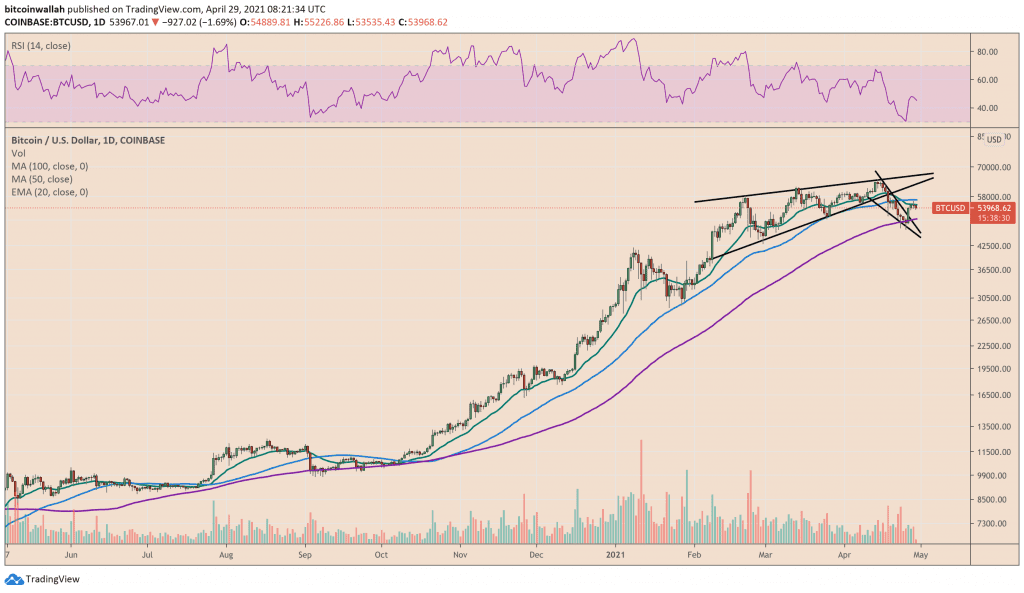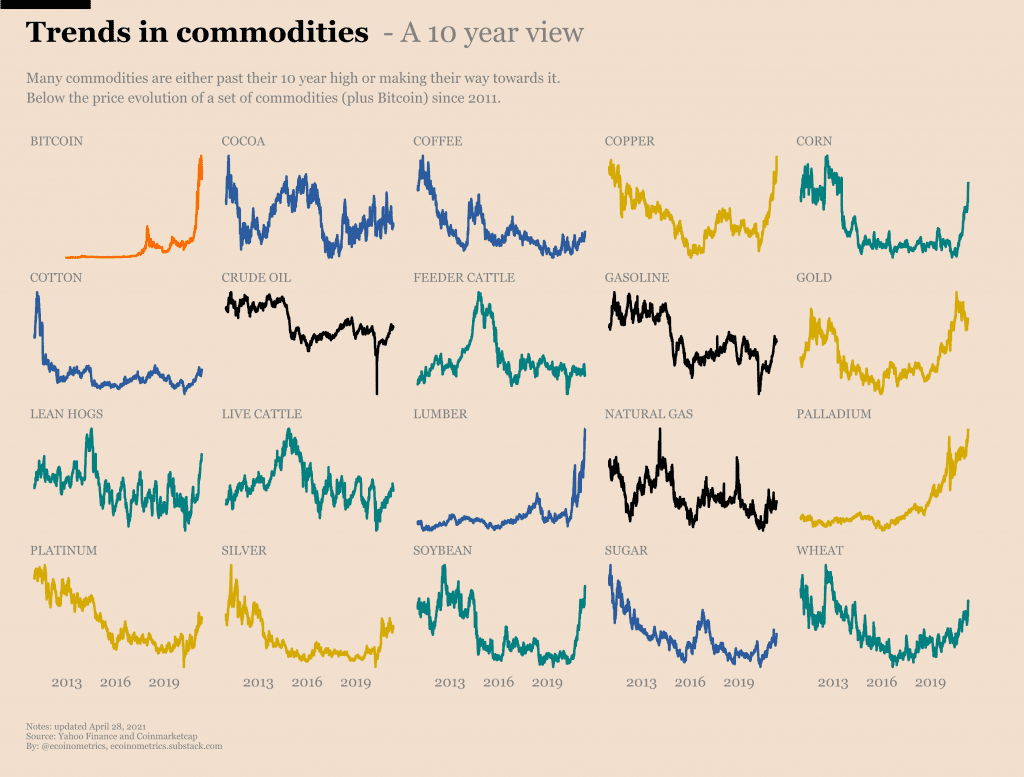Yerevan (CoinChapter.com) — Bitcoin prices pared an early climb Wednesday. It continued declining lower during the Thursday session after the Federal Reserve reiterated that it is too early to withdraw its quantitative easing programs despite the recent US economic recovery.
The BTC/USD exchange rate was down 1.69 percent, trading at $53,967 ahead of the London opening bell. At its week-to-date high, the pair changed hands for $56,476, gains that appeared in anticipation that the Federal Open Market Committee would continue its pro-inflation policies following its two-day policy meeting ending Wednesday.

FOMC Stays Dovish
Fed Chairman Jerome Powell said at a news conference after the meeting that the US economy remains a long way from its goals. He noted that the central bank officials would need to ensure more progress before deciding to taper its infinite bond-buying.
Read More: Bitcoin Week Ahead Ep01: Bearish Wedge, FOMC Meeting, Exchange Flow in Focus
Mr. Powell had earlier clarified that any policy withdrawal would come before the Fed raises its short-term interest rate target. Meanwhile, his office wants to maintain the inflation rate above 2 percent before withdrawing its easing policies.
Bitcoin has climbed steadily this year, rising to its historic high of $64,899 on April 14 and recording more than 100 percent in profits in the first quarter alone. The cryptocurrency’s upside move took cues from a flurry of institutional investments and infrastructure build-ups to attract wealthy investors — all against the prospect of rising core inflation that threatens the US dollar’s purchasing power in the long run.
Read More: US Dollar Goes Bullish Against Expectations. How Does It Impact Bitcoin?
Tesla, one of the most influential investors in the Bitcoin market, provided a live example of how a company could offset dollar risks by investing in cryptocurrencies. Its quarterly earnings report released earlier this week showed that it sold about 10 percent of its $1.5bn Bitcoin investment for a $101 million net profit. Founder Elon Musk later noted that their bitcoin sale proved that the cryptocurrency’s market is as liquid as any other traditional market.
Food and Bitcoin
Analysts at Ecoinometrics looked at inflation from a broader perspective: by focusing on rising commodity prices (including food) and how they could lead to further Bitcoin adaption.
“Copper, corn, gold, pigs, lumber, palladium, soybean… all of these are at or close to their 10 years high in price,” the research firm noted. “Coffee, cotton, crude oil, gasoline, cattle, platinum, silver, sugar, and wheat are also trending up. And while they aren’t at their 10 years high, they are definitely at their 5 years high.”

“And the longer it lasts the bigger the risk of headline inflation,” added Ecoinometrics. “This is good for Bitcoin.”
The Fed policy might provide a backstop to Bitcoin’s bullish bias, as a result.



